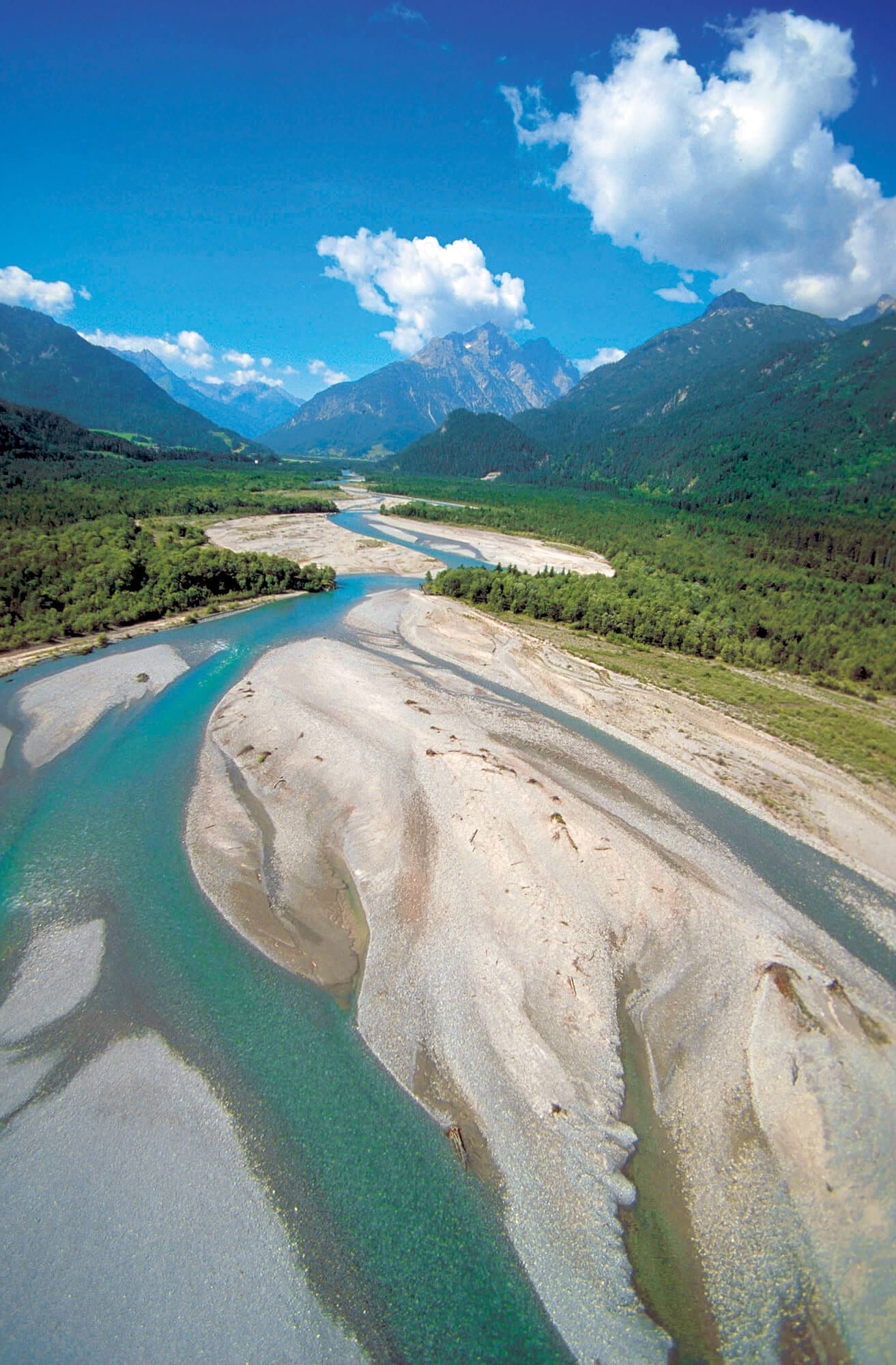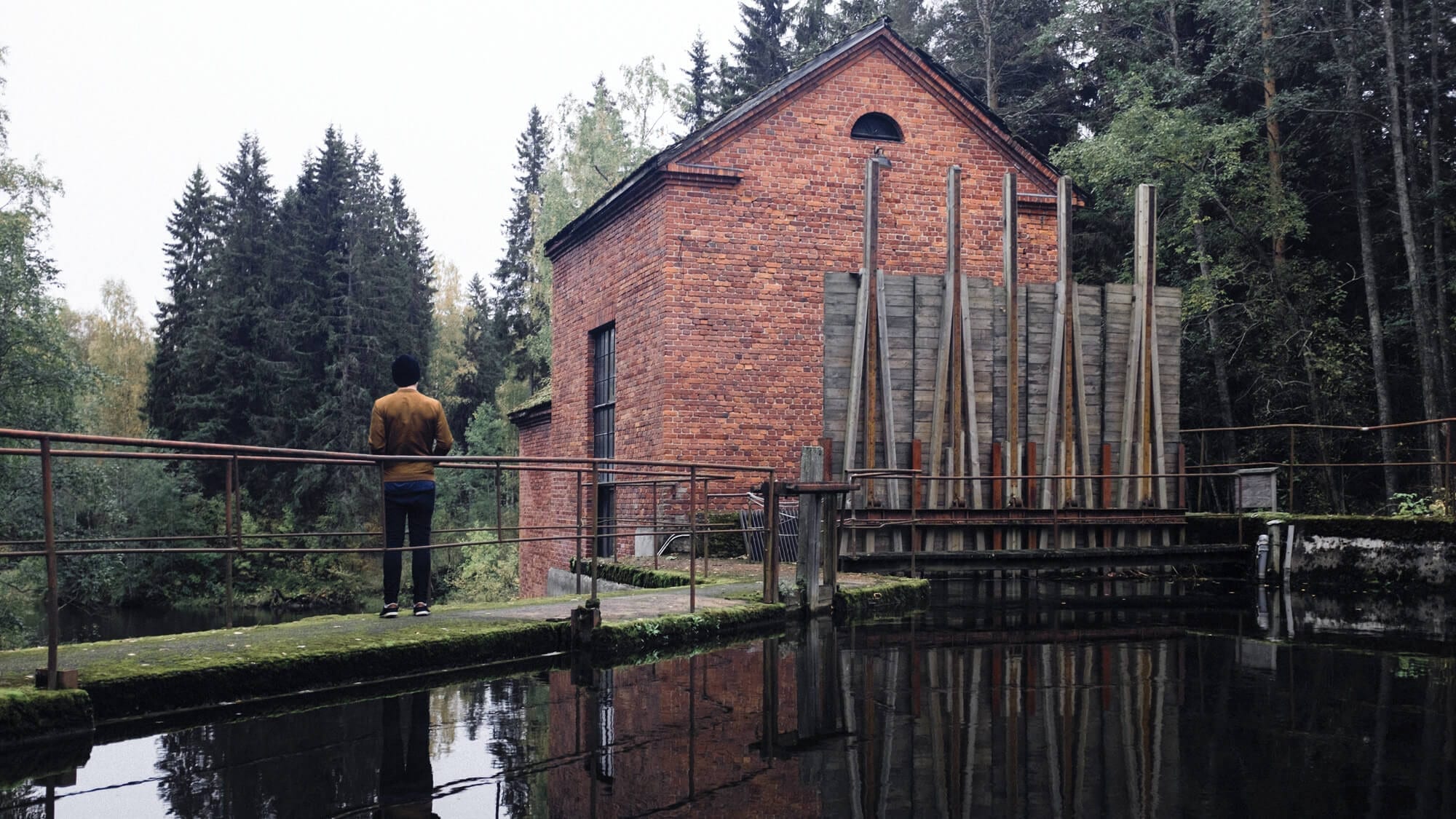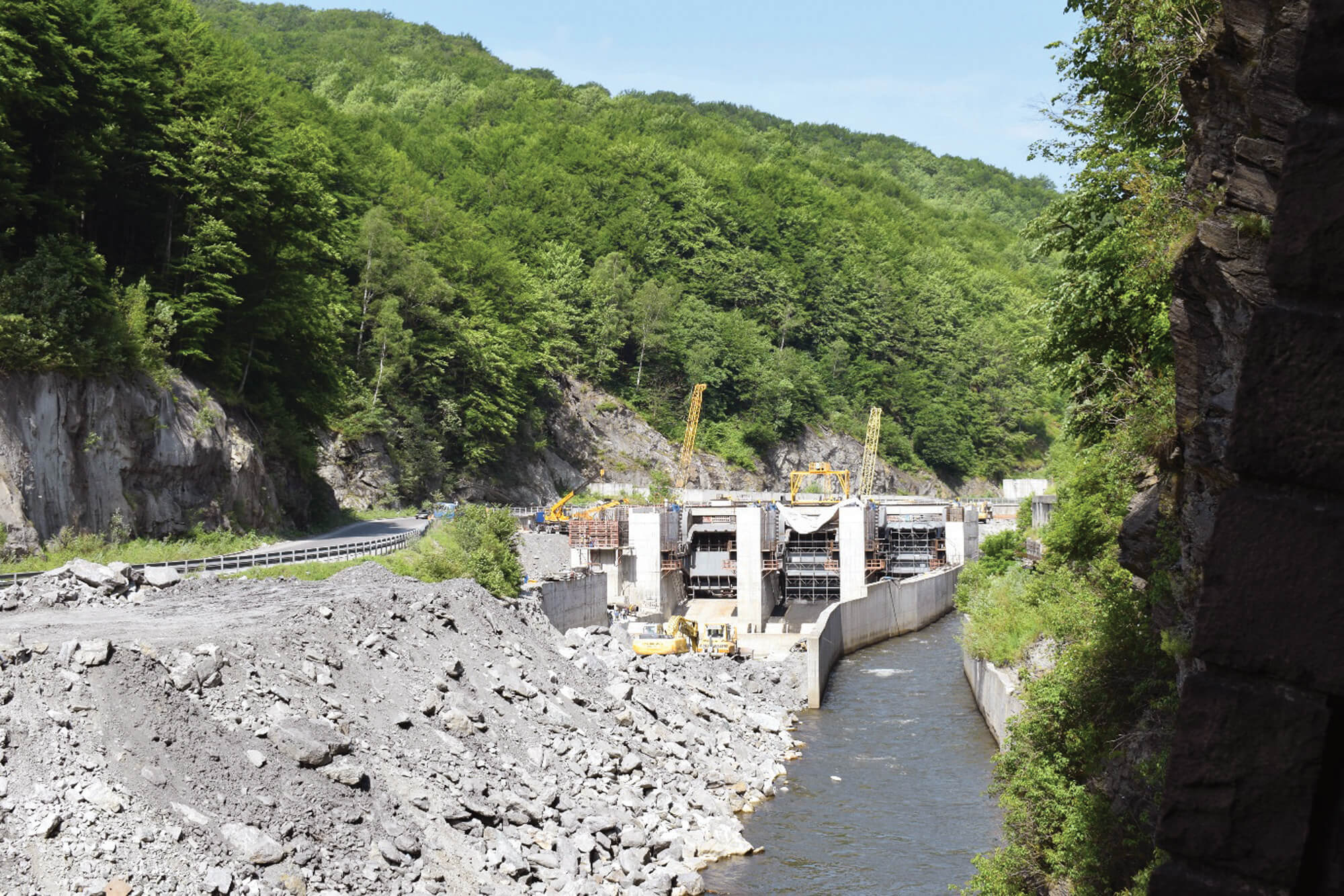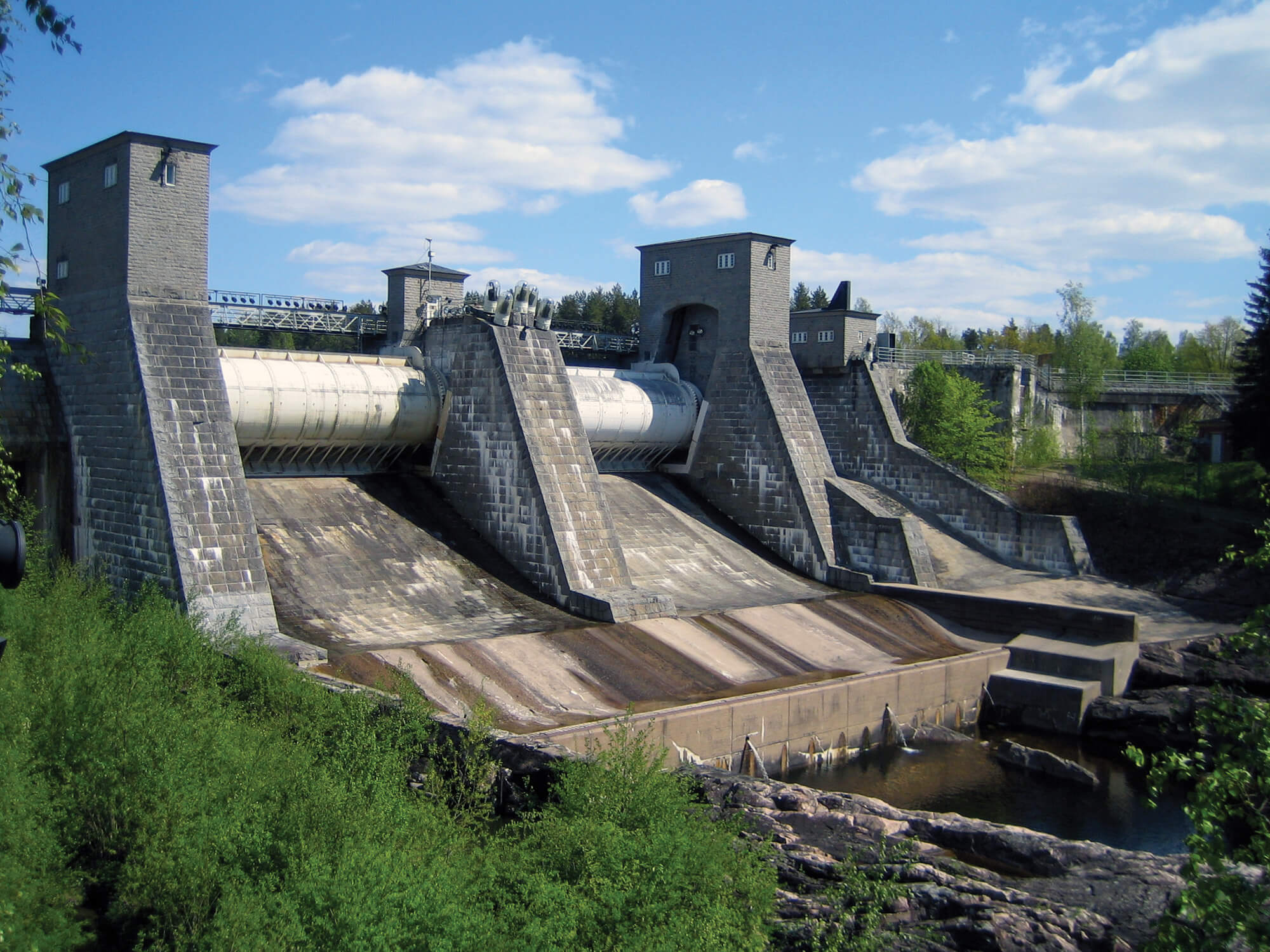Harnessing Europe’s Rivers for Power — Is It Worth It?
Humans have been using the forces of moving water for millennia, first with mills along flowing rivers for grinding grains, and now, since over a century, in the form of hydropower to produce electricity. Hailed as a clean renewable energy source, hydropower dams were built all across Europe to harness the natural power of rivers. Hydropower may be considered renewable but its ‘green’ credentials are far more questionable. Constructing and operating hydropower plants, whether big or small, always has consequences: the rivers, natural wildlife, and human communities that live alongside them who pay the price.
Rivers are not pipes or a series of manmade structures we can modify at the drop of a hat, but delicate, perfectly-tuned ecosystems. Just as blood vessels pump oxygen and other nutrients through our bodies, free-flowing rivers provide critical services to people, nature and economies – from supplying water for drinking, agriculture and many industries, to filtering out pollutants. They also house a rich array of fish and other freshwater species, many of which we depend on for food.
Hydropower may be considered renewable but its ‘green’ credentials are far more questionable.
Myths about Hydropower’s Green Credentials
The construction and operation of hydropower has only negative implications for rivers – fragmenting channels and altering the river’s natural flow, destroying habitats, blocking fish migration routes (thus preventing them from spawning and reproducing), and threatening already vulnerable species. In April 2018, the University of Graz released a report which revealed that planned hydropower plants in the Balkans could result in a shocking 1 in 10 fish species being pushed to the brink of extinction (source: Save the Blue Heart of Europe).
One of the myths about hydropower is that this environmental impact is a small price to pay in the name of the greater good. But the destruction caused by the construction and operation of hydropower plants cannot be overstated. Hydropower dams are the river’s equivalent of a heart attack. They put an abrupt stop to the river’s natural flow, cutting off fish migration routes, and slowly killing a once biodiversity-rich ecosystem and the services it provides. They also trap sediments that would naturally replenish ecosystems further downstream, which can result in the erosion of river banks and can cause deltas to collapse and changes to water tables (which in the worst cases can lead to drought).
Another myth about hydropower is that it is ‘green’ purely because it is renewable and not produced by burning fossil fuels. Studies have shown however that in warm environments in particular, the reservoirs created by dams, including from hydropower plants, are responsible for a billion tons of greenhouse gas emissions per year – vegetation simply sits and rots in the water, releasing carbon dioxide and methane, which is 34 times more potent than CO2, into the Earth’s atmosphere. And that’s on top of carbon emissions from building the plants in the first place, which often involves the use of dynamite, deforestation, and the building of many kilometres of pipes.
Small hydropower plants still impact heavily on rivers and freshwater biodiversity, but provide negligible contributions to overall electricity generation.

Thousands More Hydropower Dams Planned Across Europe
Despite the clear environmental implications, we are witnessing something of a hydropower revival in Europe, including small hydropower plants, which still impact heavily on rivers and freshwater biodiversity, but provide negligible contributions to overall electricity generation – even the security of supply provided by small hydropower is highly questionable.
A worrying surge in hydropower has been evidenced in parts of Central and Western Europe, where rivers have been heavily modified and degraded for centuries. This includes countries that have not relied on hydropower in the past, like the Netherlands. WWF estimates that at least 23 small hydropower plants are being explored here, which would contribute a miniscule 0.3% to national electricity production. Hydropower developments are also planned in countries that have been wrecking their rivers with hydropower dams for generations. In Austria, WWF estimates that around 200 additional hydropower plants are on the cards. Eastern Europe and the Balkans, which hold some of Europe’s last few remaining free flowing rivers, are also vulnerable to this dangerous wave – reportedly as many as 3,000 dams are planned for the Balkans alone, endangering some of Europe’s most important biodiversity hotspots.

Looking to Alternatives
Natural, healthy rivers are fast-becoming a rarity in Europe – for years we have been destroying, polluting and altering the natural state of our rivers through agricultural pollution, over-abstraction of water, the construction of artificial flood defences, navigation and, of course, hydropower dams. All of these factors mean that fewer than half of European freshwater bodies (such as rivers, lakes and wetlands) are currently healthy and meet the environmental standards of the EU Water Framework Directive. As such, hydropower is incredibly difficult to reconcile with the conservation objectives of freshwater habitats protected under this legislation, as well as the EU Birds and Habitats Directives.
Progress today must be where humans no longer exploit nature for their own gain, but learn to live in harmony with the environment.
It is crucial that European governments now push back on new hydropower infrastructure, and instead invest in other ways of meeting greenhouse gas emissions reduction targets – for instance, energy savings, demand flexibility, battery storage and other renewable technologies for example wind and solar, the costs of which have fallen dramatically in recent years. It is also important for the removal of obsolete hydropower dams be taken more seriously – demolishing these would help to restore the connectivity of rivers, bringing hope for migratory fish species, and thus be an effective way for Member States to meet their commitments under the EU Water Framework Directive.
Hydropower was long regarded as a clean, modern technology for power production, but we need to move on from this misguided understanding of ‘progress’. Surely, progress today must be where humans no longer exploit nature for their own gain, but learn to live in harmony with their environment?
Romania
EU legislation saves the Jiu River… for now
The Jiu River in Romania is home to 1,142 different species, approximately 200 of which are protected at national and international level – such as the Romanian barbel (Barbus petenyi), crayfish, and loach; a fish to be found nowhere else in the world except for south-western Romania.
However, for the past 14 years the river has been the site of a legal battle over the construction of a medium-sized hydropower plant. If built, the project would divert 85% of the Jiu River’s water, causing irreparable damage to the river, biodiversity loss, and destruction to the surrounding Jiu Gorge National Park.

Initially approved in 2003, the project’s plans have been modified in the interim but continue to rely on the same environmental permit. Romania then went on to become a member of the EU in 2007, and the project did not comply with its stricter environmental regulations: the area where the plant was to be built was now a Natura 2000 protected area and subject to the EU Water Framework Directive and EU Birds and Habitats Directives.
Romania is one of the countries in the EU which has been most heavily affected by hydropower.
Romania is one of the countries in the EU which has been most heavily affected by hydropower. 400 plants are already in operation, and WWF estimates that an additional 68 plants of various sizes are in planning. The exact status of many of these existing and potential plants is unknown, mostly due to lack of data, but also because many of them are suspended due to infringement procedures for breaches of the EU Water Framework Directive and Habitats Directive.
Thanks to pressure from citizens and civil society – as well as a public request from WWF for the Romanian Ministry of Environment and the EU Commission to intervene – the Bucharest Court of Appeal withdrew the building permits for the hydropower plant on the Jiu River in December 2017, declaring further work on the plant to be illegal. But the struggle continues – after the court ruling, there has been political pressure to find alternative means of going ahead with the construction work, despite the project having been declared dead.
Finland
Old Hydropower Destroying Fish and Livelihoods
In the wake of the Second World War, Finland experienced a hydropower boom which left the country with a multitude of old hydropower plants that did not take fish passes or other environmental measures into consideration. Many of these plants (and the environmental permits required to build them) date back over a century and are responsible for pushing migratory fish species to the brink of extinction and shattering the local communities that lived alongside the river.
The construction of 21 hydropower plants alongside the Kemijoki River continues to cast a dark shadow over the people living along the river, many of whom witnessed the construction first-hand. The construction and operation of these plants has disrupted the aquatic environment, surrounding landscape, and how the river is used by human communities. The Kemijoki River used to have one of the biggest salmon runs in the whole of Europe, but these plants were the kiss of death for their migration, and for the livelihoods of many people.

The Kemijoki River used to have one of the biggest salmon runs in the whole of Europe.
Despite the impact these plants have had and of the environmental targets Finland must meet under the EU Water Framework Directive, the Finnish government has so far failed to review the lifespan and outdated permits of many of the country’s hydropower plants – and further construction is still in the pipeline. There are plans to build a new hydropower plant (Sierilä) on the last freeflowing part of the Kemijoki River. This is despite the fact that more than 70% of Finnish citizens would save the country’s remaining free-flowing rivers from hydropower, and approximately 150 out of the existing 220 hydropower plants in Finland are small, and therefore have a negligible contribution to national energy production.
A new documentary by Risto Ruokola and Toni Kinnunen, sponsored by WWF Finland, Concrete Reasons, unveils the truth behind the impact these hydropower plants have had on the state of Finland’s migratory fish and communities.
To view the film, visit: vimeo.com/ondemand/concretereasons